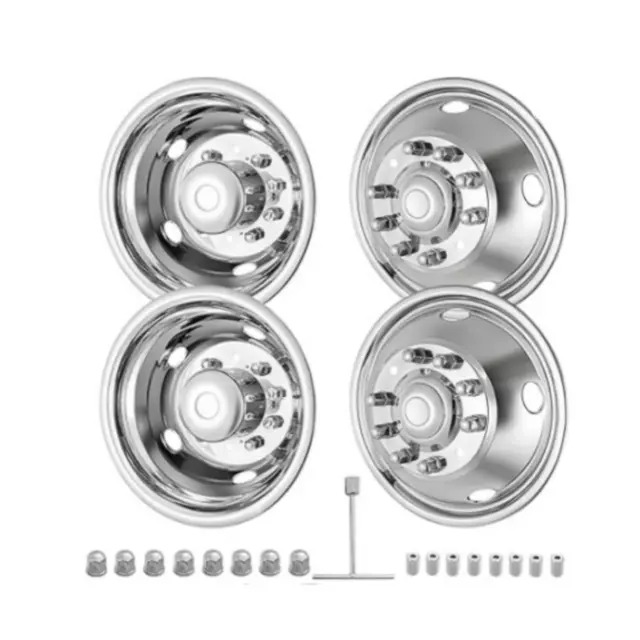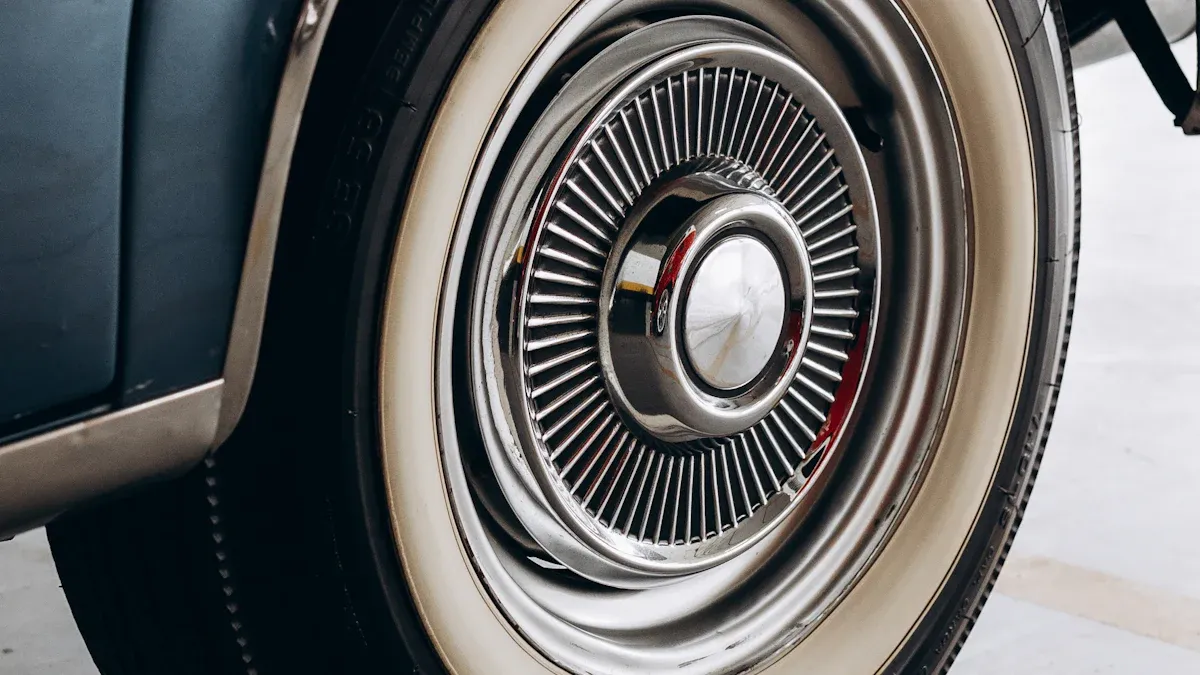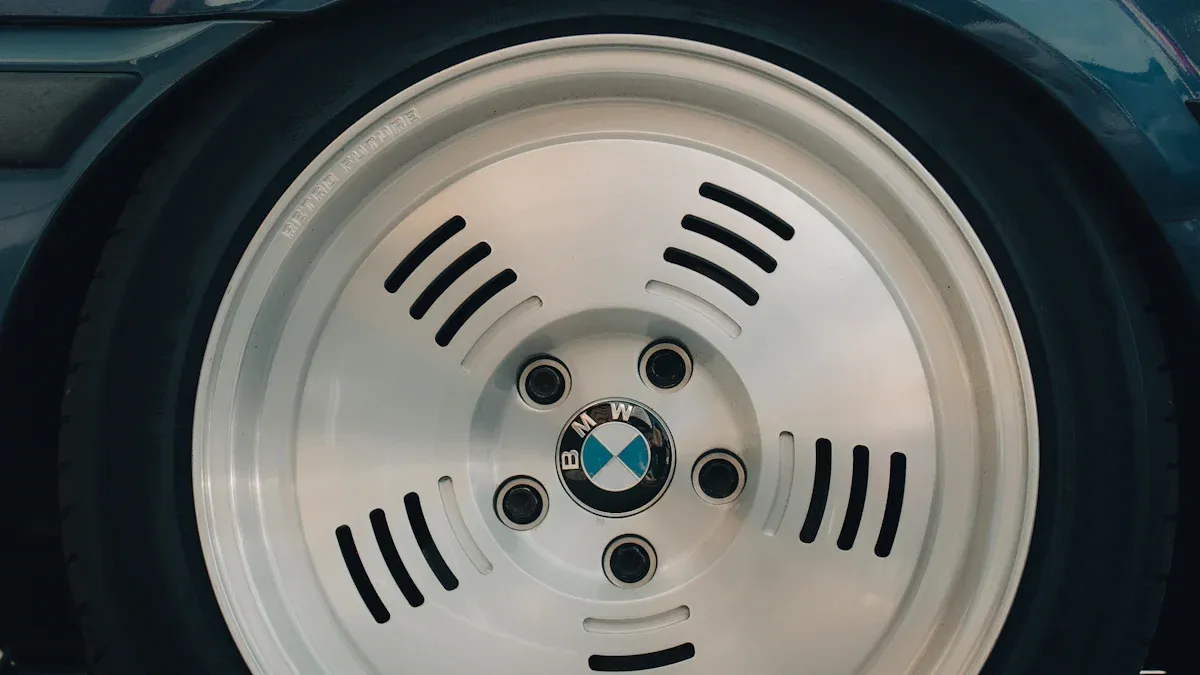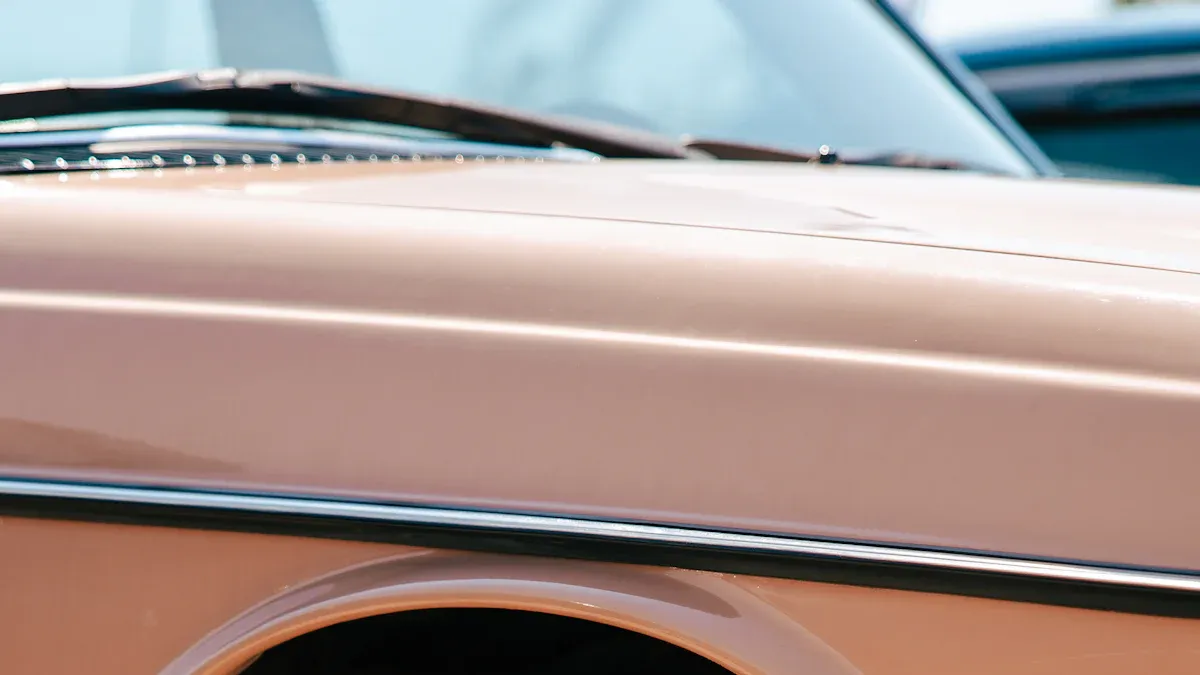

Wheel covers, or coperchi delle ruote, have always been important in car design. They do more than look nice; they keep wheels safe from dirt and help cars work better. Over time, coperchi delle ruote have changed with new technology and what people like.
Today, the coperchi delle ruote market is growing fast. Experts say it will go from $1.9 billion in 2024 to $2.5 billion by 2034. This shows people want new materials and custom designs, like eco-friendly options.
Personalizing coperchi delle ruote lets you make your car look cooler. It also makes driving safer and more comfortable.
Key Takeaways
Wheel covers keep wheels clean and improve how cars work. They make your car look nice and give a smoother ride.
You can pick wheel covers to match your style. There are many designs and materials to make your car special.
Today’s wheel covers use materials that are better for the Earth. This change cuts down on trash and helps the environment.
3D printing is changing how wheel covers are made. It creates fast, detailed designs, uses less material, and costs less.
Electric and smart cars use special wheel covers. These covers help save battery power and add safety features.
Early Functional Designs
Origins of Wheel Covers
Wheel covers first showed up when cars were new. At first, they weren’t made to look cool but to protect wheels. Early cars had open wheels that got dirty easily. Covers kept out mud, dirt, and other stuff. This made wheels last longer and cars better for long trips.
Fun Fact: "Coperchi delle ruote" means "wheel covers" in Italian. It shows how popular they are everywhere.
Materials and Making in the Early 1900s
In the 1900s, wheel covers were made from heavy metals like steel. These metals were strong but made cars heavier. Heavy cars used more fuel and didn’t drive as well. Making these covers took a lot of work and simple tools. Later, lighter metals like aluminum were used. This made cars faster and easier to build.
Designs That Were All About Use
Early wheel covers were made to work, not to look fancy. They didn’t have cool shapes or patterns. They were plain and helped wheels last longer. They also made cars move smoother, even if that wasn’t the main goal. Drivers liked them because they needed less fixing and made driving easier.
The Customization Era

Post-War Personalization Boom
After World War II, more people owned cars. Cars became a way to show personal style. Wheel covers were part of this trend. Companies started making many designs, from simple to flashy. These choices helped cars stand out on the road.
Car clubs and shows also made customization popular. People showed off cars with unique wheel covers. These covers became more than useful—they showed personality and creativity.
Plastic Revolution in Wheel Covers
In the mid-1900s, plastics changed how wheel covers were made. Plastics like ABS replaced heavy metals. This made covers lighter, cheaper, and easier to make. Companies could now create colorful and detailed designs.
Here’s a table of plastics used in car parts, including wheel covers:
Plastic Type | Benefits | Uses |
ABS | Strong, heat-resistant | Dashboards, wheel covers |
PC | Tough, recyclable | Many car parts |
PA | Durable, good for mechanics | Engine parts |
PBT | Handles heat well | Electrical connectors |
These plastics made wheel covers last longer and eco-friendly. For example, recycled PC mixed with ABS makes tough, green options for buyers.
Influence of Car Culture on Wheel Covers
Car culture in the 1950s and 1960s shaped wheel cover styles. Hot rods and muscle cars showed off bold designs. Chrome covers and patterns matched car paint jobs.
Today, people still want custom wheel covers. Here are trends driving this demand:
People spend more on car accessories to look cool.
Customizing cars is a fun hobby, with wheel covers as a focus.
Electric cars need modern designs, boosting stylish cover demand.
Trend/Factor | Description |
Rise of Electric Vehicles | EV makers want futuristic designs, increasing stylish cover demand. |
Innovative Design Developments | New designs include 3D looks and LED lights for style and function. |
Growing Aftermarket Culture | Buyers invest in unique covers to personalize their cars. |
Projected Market Growth | Market to grow from $1.91B in 2024 to $3.17B by 2032, at 6.54% yearly growth. |
Car culture turned wheel covers into art. Whether you like classic or modern looks, today’s options let you show your style.
The Flashy and Functional Period
Shiny Chrome and Bold Looks
In the mid-1900s, chrome made wheel covers stand out. Its shiny surface gave cars a fancy and bright look. Chrome reflects light, making it sparkle in the sun. Designers added glitter to chrome for colorful effects in different lights.
Some covers, like Mayhem Chrome Chaos Wheels, had 8-spoke designs. The shiny chrome not only looked cool but also protected the metal underneath. These covers became a hit with car fans who wanted style and strength.
Making Cars Faster with Better Covers
As speed became important, wheel covers helped cars move better. Engineers used computer tools to study how air flows around covers. This reduced drag and saved fuel. Wind tunnels tested how well covers cut through air. Tracks checked if these changes worked on real roads.
Experts like Doug Mason said these designs improved both looks and performance. Stylish and useful covers became popular with drivers who wanted the best of both.
Testing Method | What It Does |
Computer Simulations (CFD) | Studies air movement to make cars faster. |
Wind Tunnel Testing | Tests how air moves around covers in labs. |
Track Testing | Checks fuel savings and speed improvements on roads. |
Making Many Covers with Personal Touches
New ways to make covers allowed for cool designs in bulk. Now, you can find covers that match your style easily. Online shopping has made it simple to pick from many options.
People want covers with unique colors and patterns. In North America, car lovers drive this trend with high car ownership. In Asia, growing cities and incomes are boosting interest in car accessories.
Mass production now mixes creativity with quality. This means you can design your car’s look without losing durability. Wheel covers stay useful and stylish for everyone.
Modern Innovations

Eco-Friendly Materials and Smart Designs
Car makers now use green materials for wheel covers. This change comes from what people want and government rules. Many prefer plastics that can be recycled or materials made from plants. These choices cut down on waste and help the planet.
For example, Europe’s REACH rules push companies to use safer materials like polypropylene. Governments also support eco-friendly ideas like the Circular Economy Action Plan.
Here’s how eco-friendly ideas shape wheel cover designs:
Evidence Type | Description |
Consumer Preferences | People want recyclable plastics and plant-based materials for covers. |
Regulatory Standards | Rules like REACH make companies switch to safer materials. |
Sustainability Initiatives | Plans like the Circular Economy Action Plan promote green car parts. |
High-tech designs also make wheel covers better today. Light materials save fuel and make cars quieter. These covers reduce noise and improve how cars drive. Designers mix old and new styles for unique looks. Digital printing lets them add cool patterns and logos for personal touches.
Custom Designs with 3D Printing
Digital tools now help make custom wheel covers. 3D printing creates detailed designs fast and easily. It’s used in many industries, like cars, planes, and healthcare.
Here’s why 3D printing is important for wheel covers:
You can pick designs that match your style.
It speeds up production, so new covers come out faster.
It wastes less material, making it better for the planet.
Car companies also gain from 3D printing. They save money by making parts faster and keeping fewer extras. Using different materials in 3D printing makes covers lighter and stronger. These covers improve how cars look and work.
Fun Fact: Many car makers now invest in 3D printing to make better products faster.
Wheel Covers for Electric and Smart Cars
Electric and smart cars need special wheel covers. EVs use covers that are smooth and light to save battery power. These designs cut air drag and help cars go farther.
Smart cars bring new ideas for wheel covers. Some covers have sensors to check tire pressure or road conditions. Others have LED lights for safety and a cool look. These features make driving easier and more fun.
As EVs and smart cars grow popular, wheel covers will get even better. Companies focus on making covers that look modern and improve car performance. This trend keeps wheel covers important in car design for years to come.
Wheel covers have changed a lot over the years. They started as simple tools to protect wheels but became stylish and useful car parts. Over time, new materials, designs, and ways of making them appeared. These changes matched what people liked and new technology.
Wheel covers now use eco-friendly plastics and modern designs.
In the future, wheel covers will get even smarter and greener. Digital tools, 3D printing, and electric cars will lead these changes. New wheel covers will not only make cars look cool but also help them work better and be kinder to the planet.
FAQ
What are wheel covers, and why do they matter?
Wheel covers keep your car’s wheels clean and safe. They also make your car look better and help it move smoothly by cutting air resistance.
Can you make wheel covers match your style?
Yes, you can pick designs, colors, and materials you like. New options include 3D-printed covers and eco-friendly choices.
How do wheel covers help electric cars?
Wheel covers for EVs lower air resistance, saving battery life. Some have sensors or lights to boost safety and performance.
Are eco-friendly wheel covers strong?
Yes, they use tough recycled plastics or plant-based materials. These covers last a long time and help reduce waste.
What’s next for wheel cover designs?
Future covers will have smart features like sensors and digital designs. They’ll also use green materials to make cars better and cooler.













